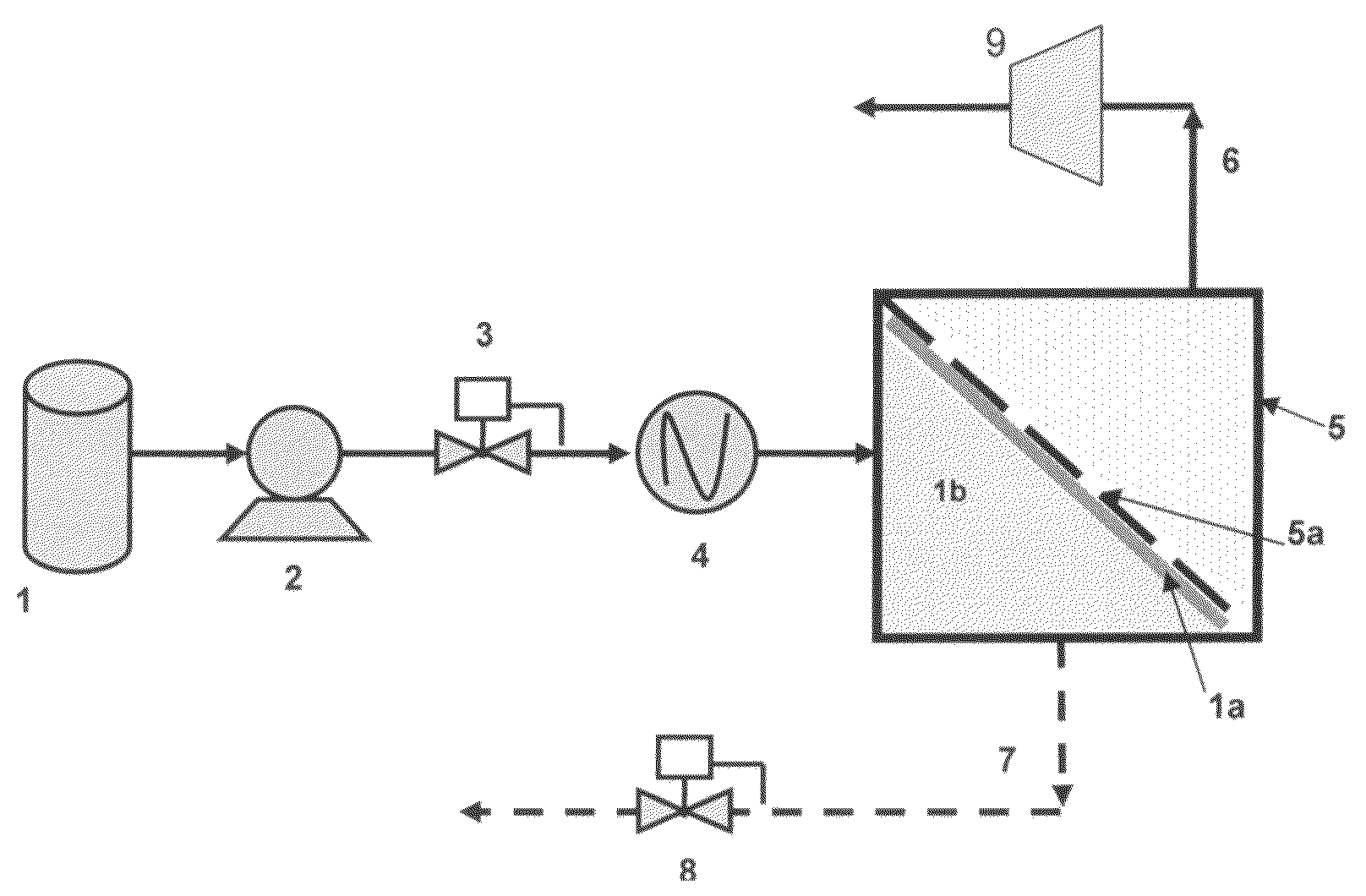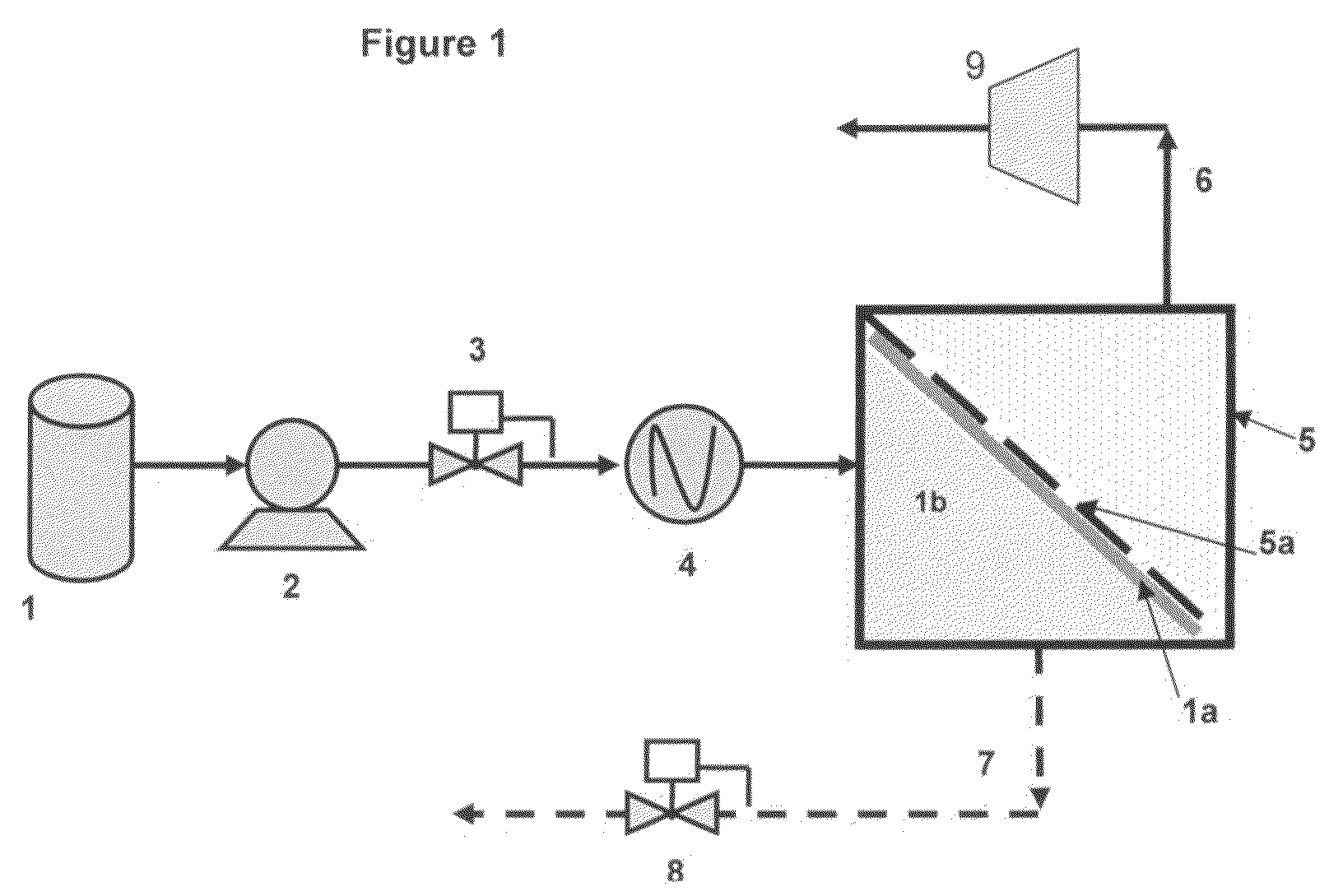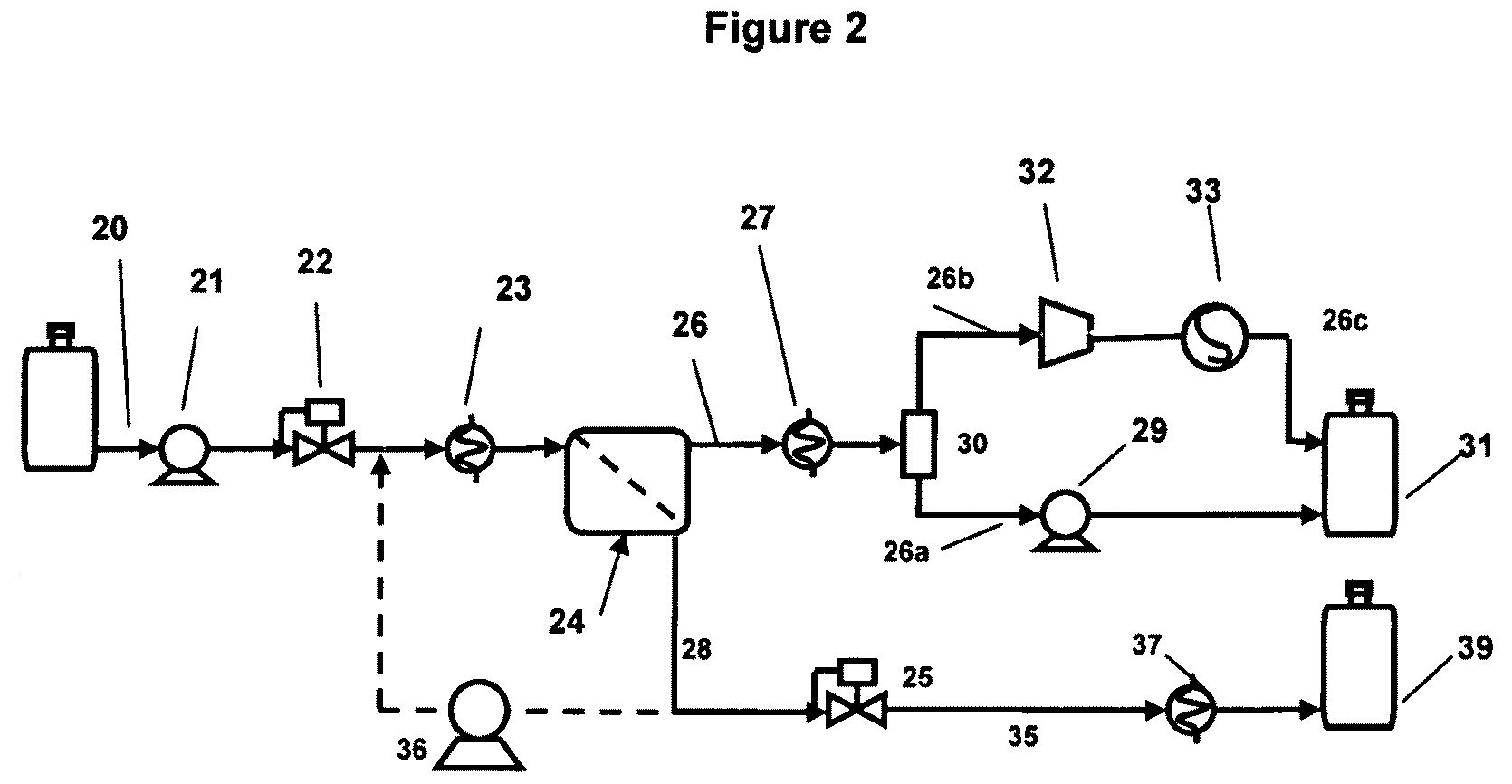Membrane separation process using mixed vapor-liquid feed
a membrane separation and vapor liquid technology, applied in the direction of hydrocarbon purification/separation, water/sewage treatment, hydrocarbons, etc., can solve the problems of limiting the permeation rate of aromatic content, difficult and inefficient separation with simple pervaporation membrane systems, and significant drop in temperature and loss of permeate flux, so as to reduce the effect of high vapor pressure of these compounds on the permeation rate and reduce the effect of high vapor pressur
- Summary
- Abstract
- Description
- Claims
- Application Information
AI Technical Summary
Benefits of technology
Problems solved by technology
Method used
Image
Examples
example 1
[0023]An aromatic selective membrane of the type described in U.S. Pat. No. 5,670,052 was used to concentrate aromatics from the gasoline in the permeate. The polyimide-polyadipate membrane used was crosslinked with diepoxidecyclooctane (DECO). The polyimide hard segment contains pyromellitic dianhydride (PMDA) and 4,4′-methylene bis(2-chloroaniline) (MOCA). The soft segment polyadipate had a molecular weight of about 2000.
[0024]The PEI-DECO polymer was coated on a 0.1 micron porosity Gore-Tex™ support to a thickness of about 40 microns. The polymer film was protected by an additional layer of 0.05 micron porosity Gore-Tex™ overlayer, thereby creating a sandwich structure with a total membrane thickness of about 150 microns. Spiral-wound membrane elements of 0.9 m2 active area each were fabricated from the coated sheets and used for the separations as described in Examples 3 and 4.
[0025]A plate-frame (wafer cassette) module design with internal heating was also...
example 2
[0026]A simplified process schematic of the apparatus used in this example is provided in FIG. 2. A conventional gasoline feed (20) was pressurized by pump (21) to obtain the desired feed pressure. Feed flow was controlled by a mass flow control valve (22). The feed was heated to the desired temperature by means of a heat exchanger (23) by contacting against a circulating hot ethylene glycol-water mixture, for this example, typically maintained at 120° C. Alternatively, a silicone oil bath was used to obtain gasoline feed temperatures up to about 160° C. The preheated feed is substantially vapor upon delivery into the membrane module (24). Backpressure on the membrane was controlled by means of a pressure regulator (25) operating on the retentate stream (28) thereby providing the desired operating pressure Pf. The permeate (26) was recovered under vacuum provided by a vacuum pump (32). The permeate vapor was cooled by means of heat exchanger (27) to about 30° C. The “heavy” permeate...
example 3
[0027]For this embodiment, a polymer coated ceramic monolith was constructed in the following manner:
[0028]A solution of poly(ethylene adipate) “PEA,” pyromellitic dianhydride “PMOA,” 4,4′-methylene bis(2 chloroaniline) and 1,2,5,6-diepoxycyclo octane “DECO” was mixed with equal amounts of DMF and acetone to create an approximate 2.0 wt % polymer solution. The final molar ratios of the components were nominally 1-PEA2000 / 2-PMDA / 1-MOCA / 2-DECO. The solution was maintained at room temperature or lower after adding DECO. The solution was used to coat a porous ceramic monolith by drawing the liquid polymer into the porous surface of the monolith. The coated monolith was caused to form a polymer film of the composition described in U.S. Pat. No. 5,670,052 on the surfaces, including the interior surfaces, of the porous monolith, forming a polymer coating substantially free of voids and holes, having a surface area of about 0.1 m2.
[0029]The membrane was used in the simplified process and ap...
PUM
| Property | Measurement | Unit |
|---|---|---|
| temperature Tf | aaaaa | aaaaa |
| boiling point | aaaaa | aaaaa |
| boiling point | aaaaa | aaaaa |
Abstract
Description
Claims
Application Information
 Login to View More
Login to View More - R&D
- Intellectual Property
- Life Sciences
- Materials
- Tech Scout
- Unparalleled Data Quality
- Higher Quality Content
- 60% Fewer Hallucinations
Browse by: Latest US Patents, China's latest patents, Technical Efficacy Thesaurus, Application Domain, Technology Topic, Popular Technical Reports.
© 2025 PatSnap. All rights reserved.Legal|Privacy policy|Modern Slavery Act Transparency Statement|Sitemap|About US| Contact US: help@patsnap.com



